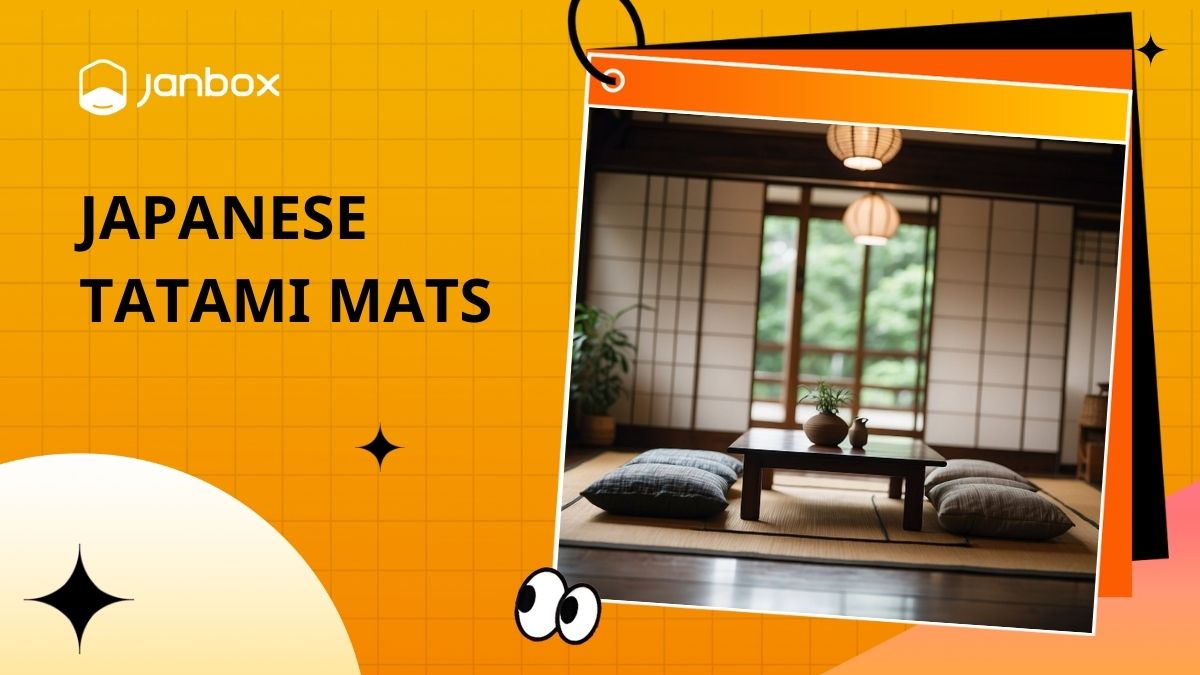Tatami mats are a type of traditional mats found in Japanese homes. Tatami mats create a feeling of softness and coolness in the summer and warmth in the winter. Let’s find out about Japanese tatami mats with Janbox now!
1. A Comprehensive Overview Of Japanese Tatami Mats
Let’s explore the history, features, sizes, layouts, benefits, and drawbacks of Japanese tatami mats to understand why they have remained a favored option for both traditional and modern interior designs.
1.1. What are tatami mats?
What are Tatami mats? Tatami is a type of traditional Japanese mat, which can be folded, and used to cover the floor. In Japanese, “Tatami” (畳) is derived from the verb “Tatamu” which means “to fold”, and is used to refer to thin objects used for lining, spreading, or folding.
Tatami mats made by the Japanese from tightly woven dry straw fibers were first introduced in 712. In the Heian period, wooden floors were very popular, when tatami mats were used as sitting mats to express themselves as an aristocratic class.

In the Muromachi period, with the convenience of this type of mat, the Japanese began to make larger tatami sheets that they then glued together to be able to spread throughout the room. Rooms with tatami floors are called zashiki (座敷) which literally means “room to sit”. The code of conduct when sitting on a tatami mat was also spread from here.
Tatami mats developed widely among all classes starting in the 17th century (Edo period). During this period, a room covered entirely with tatami was considered a typical Japanese-style room, 和室 (washitsu). However, nowadays with the modern rhythm of life, tatami mats have gradually disappeared from modern Japanese homes, but in Japanese culture, tatami mats are still unforgettable memories.
1.2. The History Of Tatami Mats
Since the Nara period in the 8th century, tatami mats have been used, originally serving as bedding for aristocrats and the upper class. Around the 16th century, tatami transitioned from being used solely for sleeping and sitting to covering entire room floors.
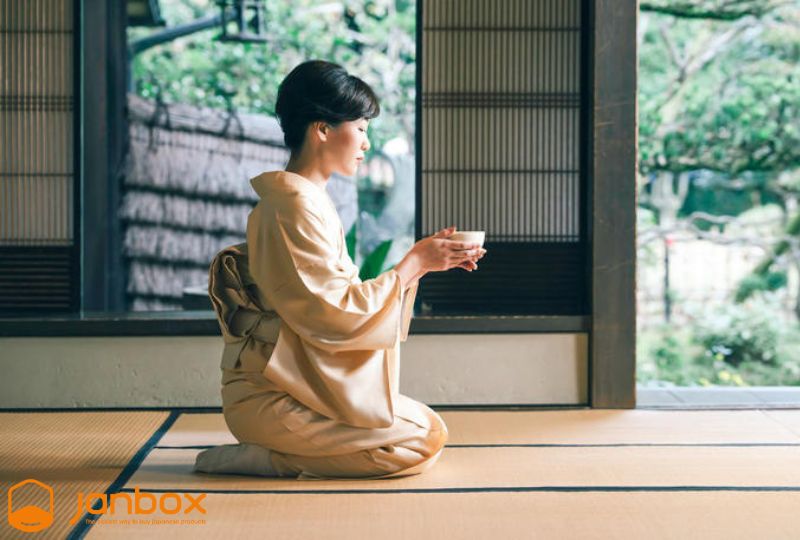
Tatami mats were widely used by all social classes by the 17th century, and most homes were equipped with tatami floors. Though their popularity has decreased in recent years, mainly because they are difficult to clean and require regular replacement, it is still common for Japanese homes to feature at least one room with tatami flooring.
1.3. How are Tatami Mats Made?
Tatami mats are made from sedge and cloth. The sedge threads are woven together, and cloth is used to wrap the edges of the sedge. Kumamoto, Hiroshima, Okayama, Fukuoka, and Kouchi are famous places for growing Tatami which is sedge fiber, or Igusa (イグサ) in Japanese. Normally, to create a Tatami mat, 4,000 – 7,000 sedge fibers are used. Machine weaving takes about an hour and a half.

1.4. Size of tatami mats
About the size of tatami mats, the standard size of a Japanese tatami is 2:1 (length twice the width) with a base size of 955mm x 1910mm, 55mm thick by Kyoto standards, and also known as Kyouma Tatami.
However, some parts of Japan have different sizes such as the Nagoya area which is 910mm x 1820mm and is called ainoma tatami, while in Tokyo it is 880mm x 1760mm and is called Edoma or Kantouma tatami.
In addition to the rectangular tatami, there are 1:1 squares called Hanjou and 3:2 tatami styles commonly used in tea rooms called daimedatami.
>>> Read more: Japanese Minimalism – The Simple Art
1.5. Tatami Mats layout
A Tatami mat consists of 3 parts: the core, the cover, and the edge.
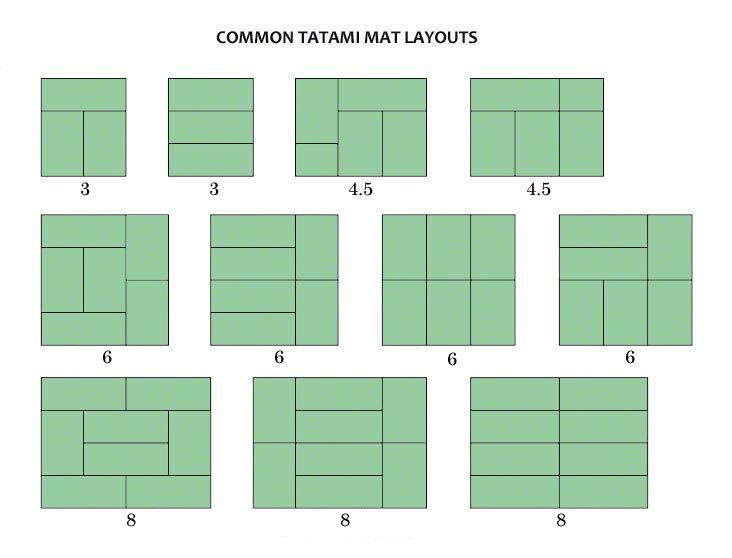
– The core of the traditional Tatami mat with a thickness of about 5cm is made by the Japanese made of dry straw pressed tightly together, the outer layer is made of Igusa grass to create a smooth and elastic feeling. However, nowadays it is replaced by artificial plywood, styrofoam, etc, which are lighter and cleaner.
– The mat is quite thin, woven by the Japanese from Igusa grass or sedge wrapped around the core of the mat. The cover can be used on both sides and can be replaced when it gets old. The lifespan of a passport is 3-5 years.
– Tatami border is used to connect 2 parts: mat core and mat cover together, made from cotton, linen, silk, etc. To increase aesthetics, the Japanese also dyed colors (mainly green). and print patterns to create a distinct beauty for the room.
1.6. 3 Common Uses Case Of Tatami Mats
Tatami mats have played a role in several areas of Japanese life. Let’s take a look at three traditional uses of Japanese tatami mats that have kept them a cultural staple.
Tatami In The Modern Age Japan
As Japan has modernized and adopted Western influences, it has become common for homes to have a Western design and wooden floors. Despite this shift, most homes include at least one room with tatami mat flooring, which merges traditional and modern, Japanese and Western styles. This room is known as washitsu, meaning “Japanese-style room.”
Opting for tatami mats flooring is a fantastic choice because it brings a soothing vibe to the home, is ideal for sleeping or sitting, and provides a soft, child-friendly surface. Nowadays, you can find tatami mats designed to lay over hardwood floors, making it easy to turn any room into a traditional tatami area.
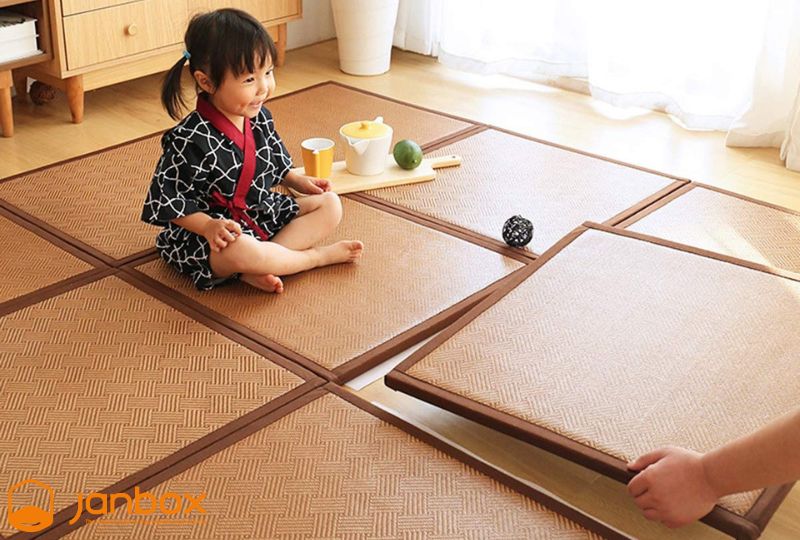
Tatami Mats For Martial Arts
Tatami mats are best known for their use in Japanese martial arts as flooring. Traditional tatami mats offer a firm yet flexible surface that can handle impacts, making them perfect for judo, karate, and aikido. Stepping onto the tatami mat is viewed as a sacred transition into the martial arts practice area.
In modern times, tatami mats used for martial arts are generally constructed from thick foam, akin to what is used in gymnastics. These mats are designed to replicate the feel and characteristics of traditional tatami, with added durability and flexibility. Although made from foam, they are still called tatami in martial arts and are given the same respect as real tatami mats.
Tatami Mats For Sleeping
Tatami mats offer great benefits for back pain relief, posture improvement, and better blood circulation. Their firm structure aligns the spine, which is especially helpful for back sleepers, and they also assist with regulating body temperature. Being compact and easy to store, tatami mats are a practical space-saving option as they do not need a bed frame.
These mats also help ease fatigue, stress, and anxiety, while also enhancing sleep quality and aiding in the fight against insomnia. Being made from natural materials, they are cost-effective and can boost energy levels through relaxation and improved circulation.

1.7. Drawbacks Of Tatami Mats
While Japanese tatami mats are known for their comfort and unique style, they are not without their downsides. Maintenance can be challenging, which is why tatami rooms tend to have very little furniture; these mats are easily damaged by tears, scratches, gouges, etc.
One downside of tatami mats is that they absorb things very well, making stains and marks more common. Dust and moisture can also accumulate, and if not properly managed, mold may develop. Regular cleaning and airing are essential to avoid these issues, though it can be a bit of a hassle.
There are also a few other considerations, including the scent of igusa, which some find pleasant while others may find it overwhelming. Another factor is the high cost of Japanese tatami mats.
2. How To Install Tatami Mats
Japanese tatami mats installation can feel daunting, but with the right direction, it would be a relatively straightforward procedure:
Simple steps to lay tatami mats
Tatami mats are heavy, so they usually stay where you put them, making installation as easy as placing them in the desired spot. However, if the mats experience frequent movement, such as in a playroom or exercise space, they may shift over time. In such cases, you can either push them back into place or construct a simple frame to keep them in position.
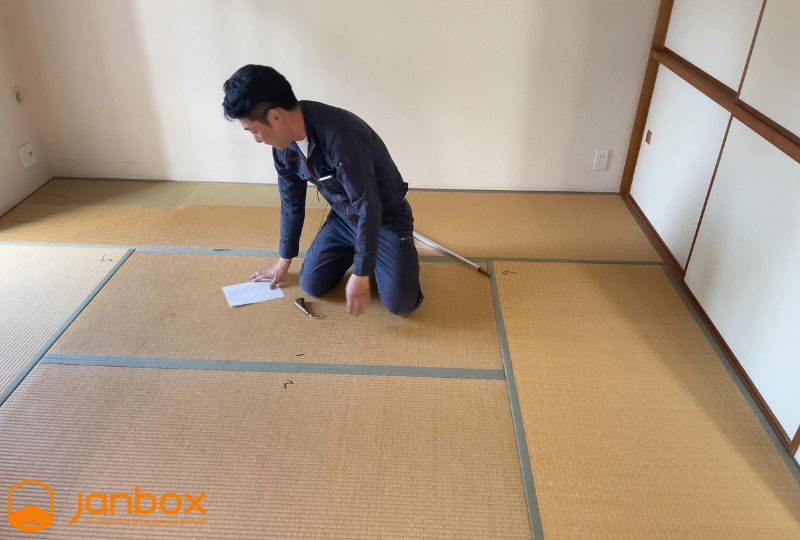
Constructing a basic frame
Making a simple frame to keep your tatami mats in place is quite easy. We suggest using “quarter round” trim or something similar, which can be found at any wood supply store. Ensure that the trim you choose is no higher than the mats, which are about 2.2 inches thick.
Simply cut the trim to the size of your mats and secure it to the subfloor by nailing it around the edges in a rectangle or square. This will help keep the tatami mats in place and prevent movement.
In cases where you cannot nail into the subfloor, like when installing tatami on tiles, you will need to glue the molding in place. Be sure to use a professional-recommended adhesive suitable for your surface.
3. How to Take Care of a Tatami Mats?
Over time, any item will be dusty. The same goes for tatami mats. Therefore, you need to clean it properly to make the projector newer and more durable.
– Cleaning in the direction of the mat’s fiber: clean the mat surface in a horizontal line from one side to the other.
– Do not use chemicals and wet wipes to clean the mat because the wet wipes are impregnated with chemicals.
– Do not use water or a towel that is too wet to clean because it will cause the mat to be moldy.
– Clean the mats at least once a week to keep them looking new.

You can use a vacuum cleaner in the suction mode for the mat and also go in the direction of the projection from one side of the mat to the other. Absolutely do not go in the other direction will damage the mat.
- Tatami mats are diverse in materials, with different materials, the cleaning method is also different.
- Cleaning Tatami mats with the natural surface (uzu and igusa): Use a dry cloth to wipe the mat and wipe it from side to side of the mat. In case the mat has stains such as food, you can use a towel dipped in very dry squeezed water to gently rub the stain. Then wipe with a dry cloth.
- Washi paper mat cleaning: Cleaning the mat surface is the same as above. Especially the mat is waterproof up to 95%. Therefore, you are completely assured when using a wet cloth to wipe without fear of mold.
- Cleaning the Hybrid plastic mat surface: Cleaning the mat surface is the same as above. Proceed to wipe the mat lengthwise to help clean dirt, and stains without damaging the mat structure, or breaking the mat. A special feature of this mat is that it can be washed with water because the surface is 100% waterproof. However, you must not use chemicals to clean the mat.
>>> Read more: What To Buy In Japan: Top 30+ Best Things To Buy In Japan
4. Tatami mat usage tips
Regarding how to install tatami mats, in Japanese culture, Tatami will be spread in two ways, that is the Shyugi Shiki way and the Fushyugi Shiki way.
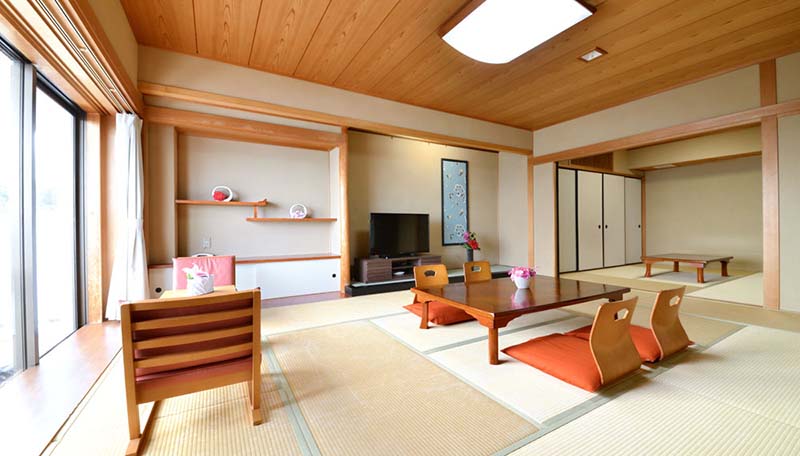
- Shyugi Shiki is a common way of spreading Tatami mats for houses in Japan. This Tatami mat flooring is done by aligning the mat edges so that they are perpendicular to each other. Besides, this spread is also used to distinguish houses and other areas in Japan.
- Fushyugi Shiki is one of the ways to spread mats used for traumatic events to pray, at funerals. In addition, this spread can also be found in large spaces such as temples and pagodas in Japan. In this way, the mats are arranged parallel to each other and spread in length or width to fit the room in a large space. Looking at this arrangement of mats, people can distinguish how the room space is.
5. Where To Buy Tatami Mats?
Are you looking to bring a touch of traditional Japan to your home and wondering “Where to buy tatami mats?” Janbox provides an easy and dependable way to purchase genuine Japanese tatami mats. With a wide range of choices and an intuitive platform, finding the perfect tatami mats for your needs has never been simpler.
Through Janbox, you can explore Amazon Japan, Yahoo Shopping, and other platforms to find different Japanese tatami mats. Descriptions are offered in multiple languages, including English, Vietnamese, Japanese, etc, simplifying the process of finding the best mattress for your needs.
Additionally, Janbox supports global payment options such as Visa, Mastercard, etc. After selecting your favorite Japanese tatami mat, Janbox will take care of the shipping process for you.
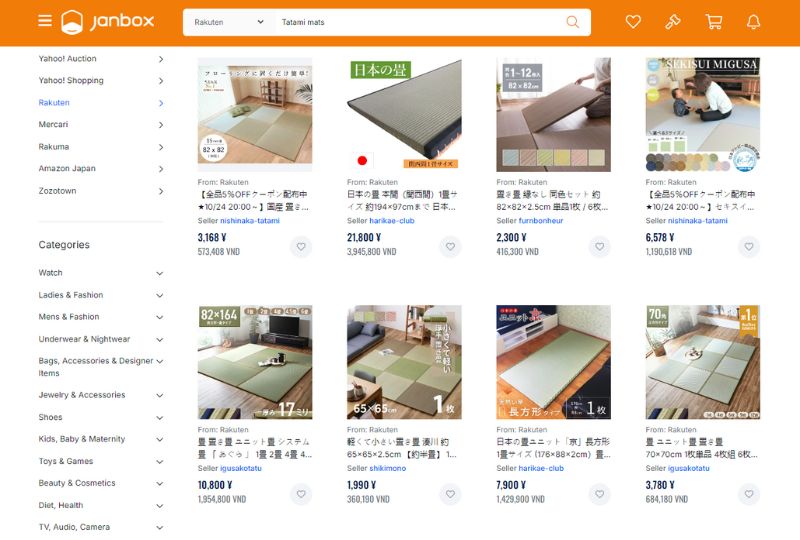
6. FAQs
Let’s explore some common questions to discover the secrets behind these unique floor coverings.
6.1. What Are The Materials Of Tatami Mats?
Japanese tatami mats, made from natural materials, are an environmentally friendly option. Rice straw and soft rush straw are the primary materials used in making a tatami mattress. The core, often referred to as the futon and tatami mat, is made from compressed rice straw, offering sturdy support. The outer layer, made from woven soft rush straw, ensures a smooth and comfortable sleeping surface.
6.2. What Are The Advantages Of Tatami Mats?
A tatami mattress is highly valued for the comfort it brings. Its firm yet flexible design is especially beneficial for individuals suffering from joint or back discomfort. Additionally, the Japanese tatami mat bed promotes good posture and circulation, ensuring a healthier sleep. These mattresses are also highly versatile and easy to store, making them a great option for small spaces.
Moreover, Japanese tatami mats are made from natural materials, making them a sustainable choice that benefits the environment. Their unique design, coupled with comfort and practicality, makes them a wonderful addition to any home. Besides providing a cozy sleeping surface, tatami mattresses add aesthetic value to various spaces. With health advantages and environmental benefits, they have gained popularity across the globe.
6.3. What Kind Of Flooring Is Good For Putting Tatami Mats On?
Tatami mats can be placed on almost any surface without issue. The only exception is areas with high humidity or damp floors, as the natural materials in the mats can lead to mold growth if exposed to moisture over time:
– Wooden floors are an ideal surface for tatami mats because they are flat, allowing for a flawless and seamless layout. They are also a practical option if you need to construct and attach a frame to the wood.
– Other hard floor types, such as porcelain tiles, ceramic or faux wood tiles, are also effective for tatami mats. While it is trickier to secure a frame to tiled floors, using glue is a viable solution.
– Low-pile carpets are also a viable option for placing tatami mats, though you may notice some additional softness, which could be fine depending on your intended use. It might be a little more difficult to press the mats tightly together due to the carpet’s depth and flexibility.
– High-pile carpets are not the best surface for tatami mats, as they may cause instability and movement, making the mats less firm compared to a solid floor. Other than that, there’s no issue with placing tatami mats on high-pile carpets.
>>> Read more: How To Buy From Rakuten Japan? [Guide Step-by-step]
Conclusion
Tatami mats in Japan are an integral part of traditional home designs. Harmoniously combined with traditional items of a Japanese-style room such as paper doors, low tea tables, etc, creating an airy space with a gentle fragrance and delicate and elegant beauty, which is always the pride of the homeowners. If you don’t know where to buy Tatami mats, visit the official Janbox website. You will have a lot of shopping suggestions, with a simple purchase method, and a 24/7 customer care team, you will soon own the best Japanese Tatami mats.
Email: [email protected]

